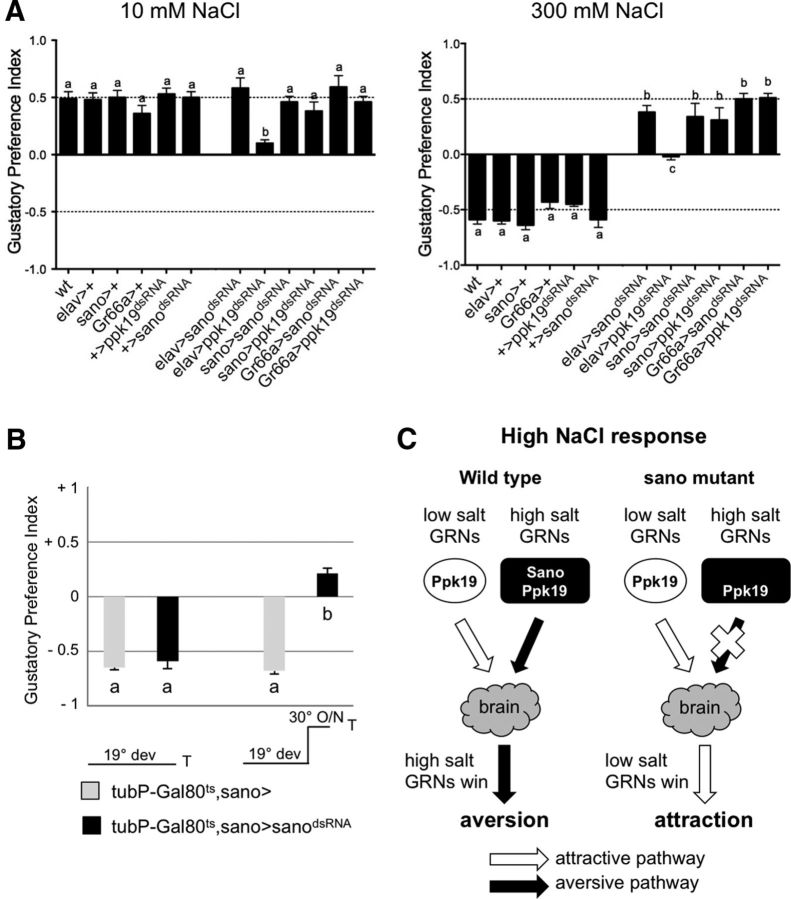Figure 3.
Disruption of sano and ppk19 by dsRNA. A, Behavioral assay for 10 mm NaCl and 300 mm NaCl. The effects of sano or ppk19 disruption in all larval neurons (elavGal4 crosses), sano-expressing neurons (sanoGal4 crosses), or Gr66a-expressing neurons (Gr66aGal4 crosses) were tested in these experiments. Each histogram (mean ± SEM of GPI) was calculated from 10 trials. The same letter over error bars indicates values that were not significantly different (ANOVA, p < 0.05). B, The effects of the temporal disruption of Sano on aversive behavior at 300 mm NaCl. Two temperature conditions were used. The offspring from the crosses were raised at 19°C (19° dev). At 19°C, GAL4 activity is repressed by GAL80ts such that sano transcripts are not impaired in tubP–Gal80ts,sano>sanodsRNA larvae. When tubP–Gal80ts,sano>sanodsRNA larvae are transferred to a permissive temperature of 30°C overnight (O/N), sanoGal4 drives expression of sanodsRNA. Each histogram (mean ± SEM of GPI) was calculated from 10 trials. The same letter over the error bars indicates values that were not significantly different (ANOVA, p < 0.05). C, Schematic model showing that the loss of Sano selectively impairs the aversive salt taste pathway. ppk19 is required in both low- and high-salt GRNs to detect NaCl. sano is required in high-salt GRNs to detect high-NaCl concentrations. In wild-type context, both low- and high-salt GRNs are activated by high-NaCl concentration, leading to aversion. Loss of sano selectively disrupts the aversive pathway, leading to attraction in the presence of high-NaCl concentration.

